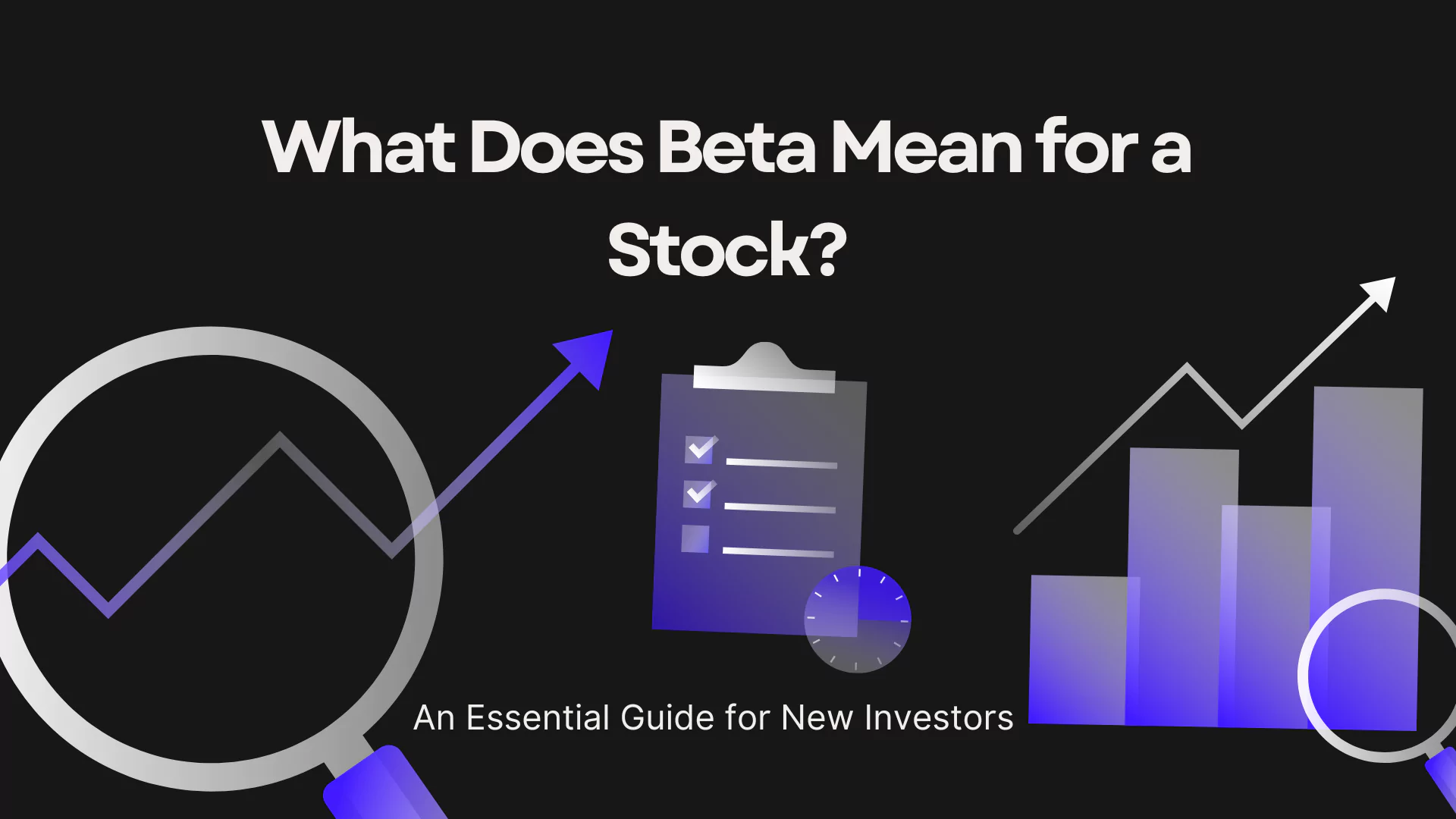
What Does Beta Mean for a Stock? An Essential Guide for New Investors
- Admin
- 0
- Posted on
If you’re new to the stock market and trading, you may have heard the term “beta” bandied about. But what does beta say about a stock, and why is it that so many investors use it to inform their decisions? Beta is essential to assessing risk and making informed decisions for your portfolio.
This guide will demystify the idea of beta in the stock market, explain how it’s calculated and how it matters, and offer real-life examples. By the finish, you’ll understand how to use beta to evaluate risk and make smarter investment choices.
What Is Beta?
Beta is a number that implies how volatile a stock is relative to the broader market. When people talk about beta, they usually mean how much the price of a particular stock tends to move in relation to a benchmark index, such as the S&P 500.
The higher the beta of a stock, the more the stock’s price has moved — or will move — relative to that of the broader market.
- A beta of 1 suggests the stock’s price moves in sync with that of the market.
- A beta greater than 1 indicates that the stock is more volatile than the market.
- A beta less than 1 means the stock is considered less volatile than the market.
- A beta of 0 means the stock is uncorrelated with the market (e.g., some cash or fixed-income investments).
Why Does Beta Matter?
Beta allows investors to gauge a stock’s risk. From looking at beta, you can get an idea of how much a stock will move during market swings.
- A stock with a beta of 1.3 is 30% more volatile than the market.
- A stock with a beta of 0.8 is 20% less volatile than the market.
What This Means for You
-
Low-beta stocks (lower risk) may be a better fit for risk-averse individuals.
-
High-beta stocks (higher risk, higher potential return) may appeal more to risk-tolerant individuals.
How Is Beta Calculated?
Knowing how beta is calculated can aid in your understanding of what it means. Here’s a simplified version of the process:
- Measure the stock’s return: Percentage change in a stock’s price over a certain time period.
- Market return: Calculate the same for the market index (e.g., S&P 500).
- Covariance: Measures how the stock’s returns move in relation to the market’s returns.
- Variance: Measures how much the market’s returns vary from their average.
Formula:
Beta = Covariance (Stock, Market) / Variance (Market)
Most financial platforms like Yahoo Finance or brokerage apps already calculate beta for you.
What Do Beta Values Tell Us?
High-Beta Stocks (>1)
- More volatile than the market.
- Respond strongly to market news.
- Common in technology, growth sectors, and small-cap stocks.
Example:
If the S&P 500 rises 10%, a stock with a beta of 1.5 might rise 15%.
If the market falls 10%, it might fall 15%.
Great for investors with high risk tolerance.
Low-Beta Stocks (<1)
- Less volatile than the market.
- Found in defensive sectors like utilities, consumer staples, and healthcare.
Example:
If the S&P 500 rises 10%, a stock with a beta of 0.6 might rise 6%.
If the market drops, it may fall less than higher-beta stocks.
Suitable for conservative investors seeking stability.
Beta of 1
- Tracks the market exactly.
- Common in large, established companies.
Example:
If the market moves 5%, the stock is expected to move 5% as well.
Balanced risk and return profile.
Negative Beta
- Moves opposite to the market.
- Rare but useful during downturns (e.g., gold or safe-haven assets).
Example:
If the S&P 500 falls 5%, a stock with a beta of -0.5 might rise 2.5%.
Offers a hedge against market volatility.
Pros and Cons of the Beta
✅ Advantages
- Simple Risk Snapshot: Quickly shows historical volatility.
- Portfolio Diversification: Helps you balance high- and low-beta assets.
- Benchmark Comparison: An Easy way to compare a stock to the market.
Limitations
- Historical Measure: Doesn’t predict future performance.
- Incomplete Risk View: Ignores company-specific risk (e.g., leadership changes, legal issues).
- Short-Term Focused: Reflects short-term movements more than long-term fundamentals.
Combine beta with P/E ratio, dividend yield, earnings growth, and other metrics for better insight.
How to Use Beta in Your Investment Strategy
Tips for Using Beta Effectively:
-
Align Beta With Your Goals:
-
Want growth? Look at high-beta stocks.
-
Want safety? Consider low-beta options.
-
-
Diversify by Beta:
-
Mix high- and low-beta stocks for balanced risk.
-
-
Watch the Market:
-
Bull market? High-beta may shine.
-
Bear market? Low-beta can help preserve capital.
-
Example of Beta in Real Life
Suppose you’re comparing two stocks:
- Stock A: Beta = 1.4 (High Beta)
- Stock B: Beta = 0.8 (Low Beta)
If the market rises 10%:
- Stock A may rise 14%
- Stock B may rise 8%
If the market falls 10%:
- Stock A may drop 14%
- Stock B may fall 8%
Knowing beta helps align investments with your personal risk tolerance.
Why Beta Is Important for New Investors
For newer investors, beta provides a simple way to understand and measure risk. When used alongside other financial metrics, it can help you make more informed decisions and build a portfolio suited to your financial goals and comfort level.
Bring Your Investment Knowledge to the Next Level
Beta is only one of many tools available to investors. Mastering it gives you an edge in understanding stock volatility and managing risk.
